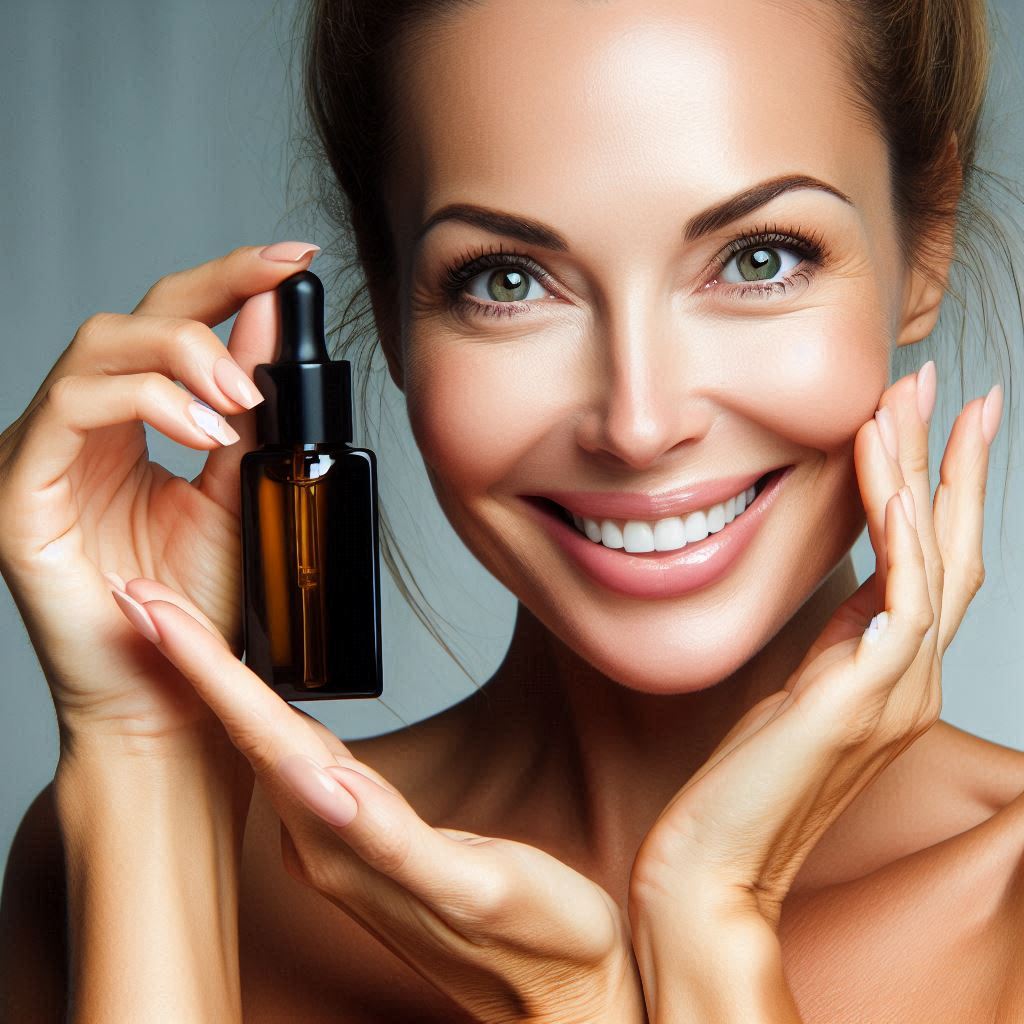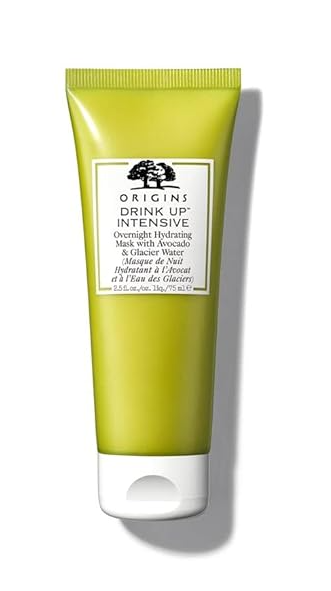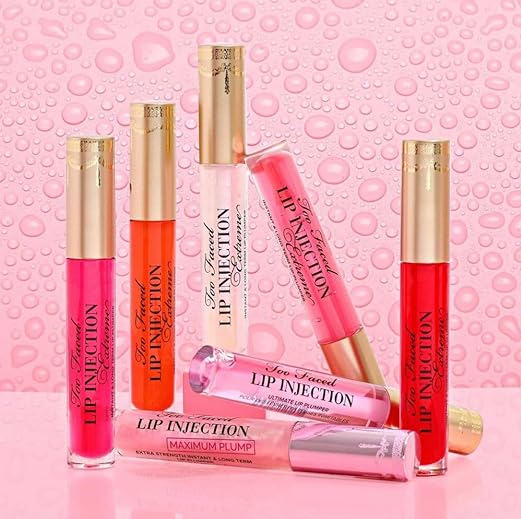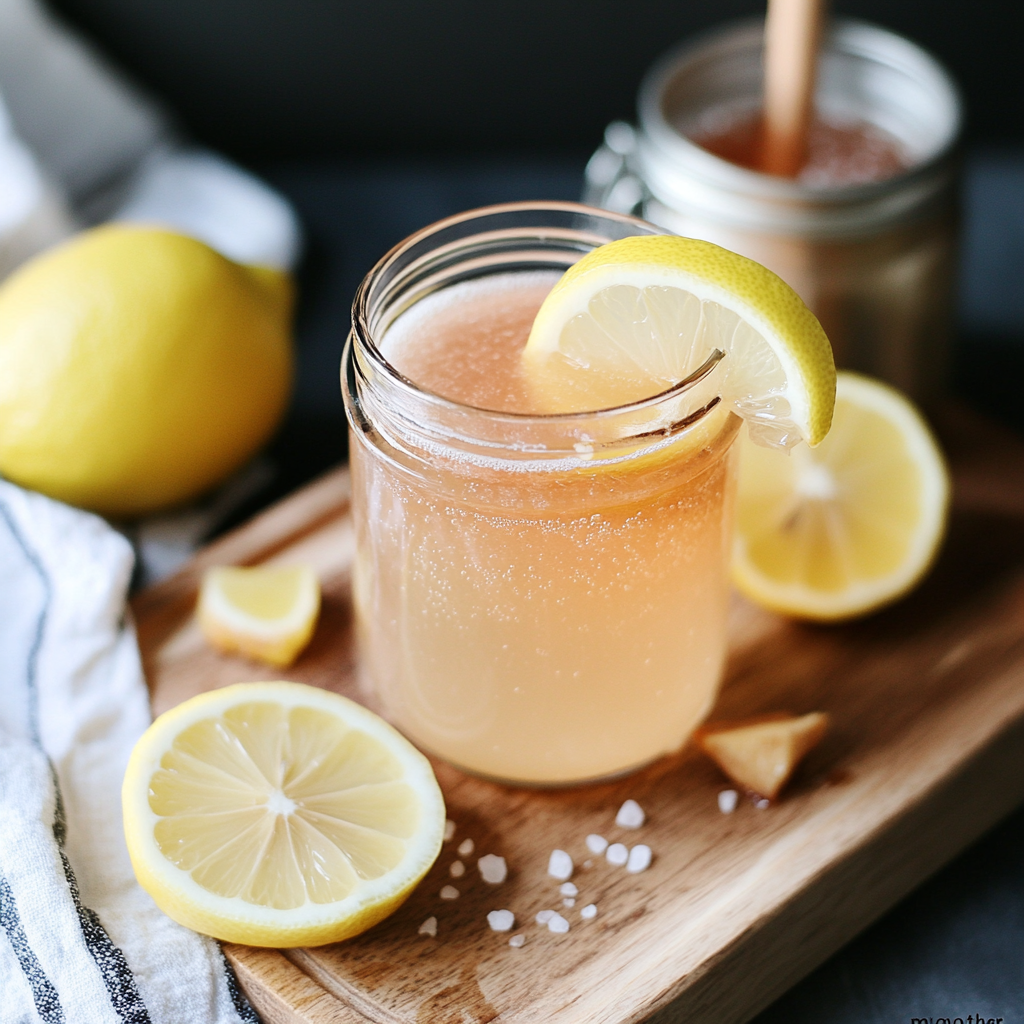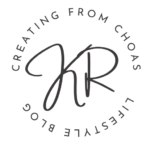Key Highlights
- Learn how to build a simple yet effective anti-aging skincare routine for beginners.
- Understand the science of aging and how it affects your skin’s health and appearance.
- Discover essential skincare steps like cleansing, exfoliating, and sun protection.
- Explore advanced anti-aging ingredients and how to customize your routine based on your skin type.
- Get answers to frequently asked questions about anti-aging skincare.
Aging doesn’t mean we have to look our age!
We cannot stop aging completely, but we can take steps to age gracefully and keep our skin healthy. Having a good skincare routine is very important in this process. This blog post will help you make a simple and effective anti-aging skincare routine that is perfect for beginners.
Understanding the Basics of Aging and Skin Care
As we get older, our bodies go through many changes. Our skin, which is the biggest organ, also changes. Different factors from inside and outside affect these changes. This causes visible signs of aging.
Your genes, hormone changes, and lifestyle choices all affect how your skin gets older. Also, things like sun exposure and pollution speed up the aging process. This leads to fine lines, wrinkles, and age spots.
The Impact of Aging on Skin
Skin aging is a normal part of life. It happens when our skin cells start to work and heal slower. This can make our skin look dull.
As we get older, our skin’s support system gets weaker. This is because we produce less collagen and elastin. These proteins help keep our skin firm and stretchy. Collagen gives strength, while elastin helps the skin return to its shape. As we age, our body breaks down these proteins faster than it can produce them. This causes our skin to lose its stretchiness and leads to wrinkles.
Because we have less collagen and elastin, our skin also gets hurt more easily. It does not heal as fast. Cuts, blemishes, and sunburns may take longer to go away.
Key Signs of Aging to Look Out For
Visible signs of aging show up as fine lines, wrinkles, and age spots. Fine lines often appear first. They are small and shallow wrinkles that usually happen around the eyes and mouth. This is due to repeating facial movements.
Wrinkles are deeper lines that appear when collagen and elastin decrease. You can see these more on the forehead, around the eyes (known as crow’s feet), and between the eyebrows (called frown lines).
Another clear sign of aging is uneven skin tone, which includes age spots or sun spots. These dark patches happen from too much sun damage. They are often found on the face, hands, and chest.
The Importance of a Targeted Anti-Aging Skincare Routine
We can’t go back in time, but we can really affect how our skin gets older by following a good skincare routine. A helpful routine should focus on certain signs of aging and keep the skin safe from more harm.
When we use the right products and ingredients, we can slow down aging, reduce current signs of aging, and keep our skin looking healthy and youthful.
Benefits of Starting Early
Starting a skincare routine to fight aging in your 20s or 30s has many benefits. Taking care of your skin now helps keep it firm and slows down the visible signs of getting older.
At this time, our skin helps itself by replacing old skin cells quickly. Using products with helpful ingredients, like retinoids, can support this process and stop early aging.
Also, starting habits, like using sun protection every day, can lower the chances of sun damage. Sun damage is a major cause of early aging. Remember, sunscreen should be used every day, not just when the sun shines. Adding it to your daily routine protects you from harmful UV rays.
How Your Skincare Needs Change Over Time
As we get older, our skincare needs change along with our skin. Mature skin tends to be drier and more sensitive, which means it needs special care. It is important to adjust your routine for these changes. This will help keep your skin healthy and deal with specific issues.
Keeping a strong skin barrier is very important for mature skin. Our skin makes less natural oil as we age. Therefore, it’s crucial to use products that help and restore the skin barrier. Look for those with ceramides and hyaluronic acid. These ingredients can lock in moisture and protect the skin from stress in the environment.
Also, we should pay attention to changes in skin texture, like fine lines, wrinkles, and age spots. To tackle these, include powerful ingredients like retinoids, peptides, and antioxidants in your routine. These ingredients work well together to boost collagen production, protect against damage from free radicals, and improve the overall texture of your skin.
Preparing for Your Anti-Aging Skincare Journey
Starting an anti-aging skincare journey means you should know your skin type and what it needs. This knowledge helps you create a personal routine with products made for your skin’s features.
After you know your skin type, you can start to build a basic routine with important products. Slowly adding new products and ingredients lets your skin get used to them and reduces the chance of irritation. Staying patient and being consistent is important for getting good results that last.
Identifying Your Skin Type and Concerns
Determining your skin type is the first step to creating a good anti-aging skincare routine. There are three main types: dry, oily, and combination skin. Each type has its own traits that help you choose the right products.
Dry skin lacks moisture. It often feels tight and can be flaky. On the other hand, oily skin has a shiny look because of too much oil. This can lead to breakouts.
Combination skin is a mix of both types. It usually has an oily area in the T-zone, which includes the forehead, nose, and chin. The cheeks may feel dry or normal. Knowing your specific skin type helps you pick the best products for your needs. This way, you can get the best results and reduce the chances of irritation.
Essential Tools and Products for Beginners
Starting your anti-aging skincare routine does not mean you need a lot of expensive products. You can create a strong foundation with just a few basic tools and products.
First, pick a gentle cleanser. This should remove dirt without taking away your skin’s natural oils. Make sure to select a cleanser that fits your skin type. If you have dry skin, choose a creamy or oil-based cleanser. For oily or combination skin, go for gel or foam cleansers.
Next, a moisturizer is necessary. It keeps your skin hydrated and helps protect the skin barrier. Look for moisturizers that have humectants like hyaluronic acid to bring in moisture. Emollients like ceramides help hold that moisture in.
Finally, don’t forget daily sun protection. A broad-spectrum sunscreen with SPF 30 or higher is essential to protect your skin from harmful UVA and UVB rays. Here are some key products to include:
- Gentle cleanser: Find a fragrance-free option that fits your skin type.
- Moisturizer: Choose one with hydrating and barrier-strengthening ingredients.
- Sunscreen: Get a broad-spectrum SPF 30 or higher for daily use.
Step-by-Step Guide to Building Your Routine
The RIGHT way to Protech your Youth? by kali runkNow that we have talked about the basics, let’s make an easy and effective anti-aging skincare routine. This routine will fit well into your daily life. We will divide it into simple steps for morning and nighttime.
Keep in mind, being consistent is very important. You may not notice big changes right away, but sticking to your routine will slowly show a healthier and brighter skin.
Step 1: Gentle Cleansing
The most important part of a good skincare routine is cleansing. It gets rid of dirt, sweat, pollution, and makeup that build up on the skin during the day. If these stay on your skin, they can clog your pores. This makes it harder for the other skincare products to work well.
Start by picking a gentle cleanser that matches your skin type. If you use a lot of makeup, you should think about double cleansing at night. This means you use a cleansing balm or oil first to dissolve the makeup. After that, wash your face with a water-based cleanser to get rid of any leftover makeup.
Be gentle with your skin. Use lukewarm water and don’t rub hard, as this can irritate it or remove its natural oils. Massage the cleanser softly in circular motions. This will help lift away impurities and dead skin cells effectively.
Top Facial Cleansers
CeraVe Moisturizing Cream: A popular choice for dry skin, this cream is formulated with ceramides to help strengthen the skin’s barrier.
TULA Skin Care The Cult Classic Purifying Face Cleanser: Infused with probiotic extracts and nourishing ingredients, it removes impurities, makeup, and excess oil without stripping your skin.
Olay Retinol 24 + Peptide Face Wash, Smoothing, Sulfate-Free, 16 oz A retinol-based moisturizer that can help to reduce fine lines and wrinkles.
La Roche-Posay Toleriane Hydrating Gentle Face Cleanser: A broad-spectrum sunscreen that is suitable for sensitive skin.
Step 2: Effective Exfoliation
Exfoliation is an important part of an anti-aging routine. It helps remove dead skin cells that can make your skin look dull and block pores. By taking away this buildup, you can show off brighter and smoother skin. It also helps other skincare products work better.
There are two main types of exfoliation: chemical and physical. Chemical exfoliants, like glycolic acid (AHA) and salicylic acid (BHA), use acids to break down the bonds that hold dead skin cells together.
Physical exfoliants, on the other hand, use small particles or tools to scrub away dead skin. When picking an exfoliator, think about your skin type and how sensitive your skin is. Begin with gentle exfoliation just once or twice a week. If your skin feels okay, you can slowly do it more often. You want to be careful to not dry out your face, that is why you need to work up to exfoliating more often.
Top Facial Exfoliates
Paulas Choice–SKIN PERFECTING 2% BHA Liquid Salicylic Acid Exfoliant: Facial Exfoliant for Blackheads, Enlarged Pores, Wrinkles & Fine Lines, 4 oz Bottle
- Key benefits: Targets blackheads, enlarged pores, wrinkles, and fine lines.
- Active ingredient: 2% beta hydroxy acid (BHA).
- Best for: Those with oily or combination skin seeking to unclog pores and improve skin texture.
TULA Skin Care So Polished Exfoliating Sugar Scrub: Face Scrub, Gently Exfoliates with Sugar, Papaya, and Probiotic Extracts for a Softer and Radiant-Looking Complexion
- Key benefits: Gently exfoliates, improves skin texture, and promotes radiance.
- Active ingredients: Sugar, papaya, and probiotic extracts.
- Best for: All skin types seeking a physical exfoliant with added benefits.
- Key benefits: Provides gentle exfoliation, improves skin clarity, and is suitable for sensitive skin.
- Active ingredient: Water-based gel formula.
Best for: Those with sensitive skin or those seeking a non-abrasive exfoliant.
- Key benefits: Resurfaces skin, improves brightness, and promotes smoothness.
Active ingredients: Glycolic and mandelic acids.
Best for: Those seeking a chemical exfoliant to brighten and improve skin texture.
Top Body Exfoliates
- Key benefits: Exfoliates, smooths, revitalizes, and renews skin.
- Active ingredients: Dead Sea salt and citrus essential oils.
- Best for: Those seeking to address scars and wrinkles.
- Key benefits: Exfoliates, prevents ingrown hairs, and prepares skin for shaving.
- Active ingredients: Not explicitly stated.
- Best for: Those with sensitive skin in the bikini area.
- Key benefits: Exfoliates, moisturizes, and addresses acne, cellulite, scars, and wrinkles.
- Active ingredients: Himalayan salt, collagen, and stem cells.
- Best for: Those seeking a multi-purpose exfoliant for body and face.
SLMD by Dr. Pimple Popper Glycolic Acid Body Scrub is a powerful exfoliant designed to address rough, bumpy skin and skin prone to keratosis pilaris, ingrown hairs, and shaving bumps.
So what to consider when picking an exfoliator? I have backne (back-acne) so I need my exfoliant to have Glycolic Acid. For this reason, I am now using SLMD by Dr. Pimple Popper. I have used Truly body scrub but I needed something stronger.
- For facial exfoliation: Consider the DERMA E or First Botany scrub, both of which can be used on the face.
- For body exfoliation: Any of the scrubs can be used on the body. If you’re specifically targeting the bikini area, the Truly Beauty scrub is a good option.
- For specific concerns: If you have acne, cellulite, or scars, the First Botany or Turmeric Body Scrub might be beneficial.
Step 3: Incorporating Antioxidants
Antioxidants are very important for protecting our skin from harm caused by the environment. Free radicals are unstable molecules. They come from pollution, UV rays, and other harmful elements. These free radicals can hurt skin cells and make us age faster.
Antioxidants help to neutralize these free radicals. They reduce their harmful effects on the skin. One strong antioxidant is vitamin C. It is often included in serums and moisturizers. Vitamin C helps brighten the skin, even out skin tone, and boosts collagen production.
Other good antioxidants are vitamin E, green tea extract, and resveratrol. Adding an antioxidant-rich serum or moisturizer to your morning routine gives your skin a protective shield against daily stress.
Facial Serum’s with Antioxidants Incorporated
Top Facial Serums for the Morning and Night
Morning Serums:
- Lightweight and hydrating: Opt for serums that are quickly absorbed and provide hydration to prep your skin for the day.
- Antioxidant protection: Ingredients like vitamin C and green tea can help protect your skin from environmental stressors.
- Brightening: If you’re looking for a brighter complexion, consider serums with niacinamide or alpha arbutin.
Night Serums:
- Retinol or retinoids: These ingredients are often used at night as they can be photosensitive. They can help reduce fine lines and wrinkles.
- Peptides: Peptides can help stimulate collagen production, improving skin elasticity and firmness.
- Hyaluronic acid: A hydrating ingredient that can be used both day and night, but it’s especially beneficial at night when your skin has more time to absorb moisture.
Facial Serums
TruSkin Vitamin C Serum
- Key benefits: Anti-aging, brightening, hydration.
- Active ingredients: Vitamin C, hyaluronic acid, vitamin E.
- Best for: Those seeking to address dark spots, uneven skin tone, fine lines, and wrinkles.
CeraVe Hyaluronic Acid Serum
- Key benefits: Hydration, suitable for dry skin.
- Active ingredients: Hyaluronic acid, vitamin B5, ceramides.
- Best for: Those with dry or sensitive skin.
La Roche-Posay Effaclar Salicylic Acid Acne Treatment
- Key benefits: Acne treatment, pore minimization, post-acne mark reduction.
- Active ingredient: Salicylic acid.
- Best for: Those with acne-prone skin.
NuFACE Super Booster Antioxidant Serum
- Key benefits: Skin tightening, brightening, blue light protection.
- Active ingredients: Antioxidants.
- Best for: Those using a NuFACE microcurrent device and seeking additional benefits.
The Ordinary Face Serum Set
- Key benefits: Targets blemishes, improves skin texture, and enhances radiance.
- Active ingredients: Caffeine, hyaluronic acid, niacinamide.
- Best for: Those seeking to address multiple skin concerns.
Neutrogena Hydro Boost Hyaluronic Acid Serum
- Key benefits: Hydration, lightweight, suitable for dry skin.
- Active ingredient: Hyaluronic acid.
- Best for: Those with dry or combination skin.
Tree of Life Facial Skin Care Set
- Key benefits: Brightening, firming, hydration.
- Active ingredients: Vitamin C, retinol, hyaluronic acid.
- Best for: Those seeking a multi-purpose skincare set.
L’Oreal Paris Revitalift 1.5% Pure Hyaluronic Acid Face Serum
- Key benefits: Hydration, wrinkle reduction.
- Active ingredient: Hyaluronic acid.
- Best for: Those seeking to improve skin hydration and reduce wrinkles.
Choosing the right facial serum depends on your specific skin concerns and preferences.
- For anti-aging and brightening: Consider TruSkin Vitamin C Serum or Tree of Life Facial Skin Care Set.
- For hydration: CeraVe Hyaluronic Acid Serum, Neutrogena Hydro Boost, or L’Oreal Paris Revitalift are good options.
- For acne treatment: La Roche-Posay Effaclar Salicylic Acid Acne Treatment is specifically designed for acne-prone skin.
- For additional benefits: The NuFACE Super Booster Antioxidant Serum is a good choice if you’re using a microcurrent device.
However, if you have a simple skincare routine, using the same serum both morning and night might be sufficient. Just ensure that the serum contains ingredients that address your primary skin concerns.
Ultimately, the best approach is to experiment and see what works best for your skin. If you’re unsure, consult with a dermatologist for personalized recommendations.
Step 4: Moisturizing Deeply
Maintaining good skin hydration is important for a youthful look. Moisturizers help by pulling in and holding moisture. This keeps the skin full and soft. They also help support the skin barrier, which is our skin’s way of protecting itself from damage in the environment.
Look for moisturizers that have humectants like hyaluronic acid, glycerin, or aloe vera. These ingredients pull moisture from the air to the skin. You should also look for emollients like ceramides and shea butter. They help keep moisture in and smooth the skin’s surface.
Pick a moisturizer that fits your skin type. If you have oily skin, choose light and oil-free products that won’t block pores. If your skin is dry, go for richer and creamier options that provide deep hydration.
Favorite Moisturizers
SimplyVital Face Moisturizer Collagen Cream
- Key benefits: Anti-aging, moisturizing, lifting, and recovery.
- Active ingredients: Collagen.
- Best for: Those seeking a comprehensive anti-aging moisturizer.
Neutrogena Triple Age Repair Anti-Aging Daily Facial Moisturizer
- Key benefits: Anti-aging, SPF 25, brightening.
- Active ingredients: Vitamin C, glycerin, shea butter.
- Best for: Those seeking a moisturizer with sun protection and brightening properties.
CeraVe Moisturizing Cream
- Key benefits: Intense hydration, suitable for dry skin.
- Active ingredients: Hyaluronic acid, ceramides.
- Best for: Those with extremely dry skin.
La Roche-Posay Toleriane Double Repair Face Moisturizer
- Key benefits: Hydration, suitable for all skin types.
- Active ingredients: Ceramide, niacinamide.
- Best for: Those with sensitive or reactive skin.
No7 Restore & Renew Multi Action Face & Neck SPF 30 Day Cream
- Key benefits: Anti-aging, hydration, sun protection.
- Active ingredients: Hyaluronic acid.
- Best for: Those seeking a multi-tasking moisturizer with SPF.
Neutrogena Retinol Face Moisturizer
- Key benefits: Anti-aging, sun protection.
- Active ingredients: Retinol, hyaluronic acid.
- Best for: Those seeking a potent anti-aging moisturizer with SPF.
TULA Skin Care 24-7 Hydrating Day & Night Cream
- Key benefits: Hydration, anti-aging.
- Active ingredients: Watermelon, blueberry extract.
- Best for: Those seeking a lightweight, hydrating moisturizer.
IT Cosmetics Confidence in Your Beauty Sleep Night Cream
- Key benefits: Anti-aging, hydration.
- Active ingredient: Hyaluronic acid.
- Best for: Those seeking a night cream to address fine lines, wrinkles, and dryness.
No7 Radiance+ Brightening Vitamin C Moisturizer
- Key benefits: Brightening, hydration.
- Active ingredient: Vitamin C.
- Best for: Those seeking to improve skin tone and radiance.
Choosing the right facial moisturizer depends on your specific skin concerns and preferences.
- For anti-aging: Consider SimplyVital, Neutrogena Triple Age Repair, Neutrogena Retinol, or TULA Skin Care.
- For hydration: CeraVe, La Roche-Posay, or TULA Skin Care are good options.
- For sun protection: Neutrogena Triple Age Repair or No7 Restore & Renew are suitable choices.
- For specific concerns: If you have acne-prone skin, La Roche-Posay might be a good option. For sensitive skin, CeraVe or La Roche-Posay could be suitable.
Step 5: Sun Protection Every Day
Sun protection is one of the most important parts of any skincare routine to fight aging. UV rays can cause early signs of aging, like wrinkles, age spots, and skin losing its tightness.
UV rays are around us all year, even when it’s cloudy. This means you need to protect your skin from the sun every day. Use a broad-spectrum sunscreen with an SPF of 30 or higher each morning. This will create a shield against harmful UVA and UVB rays.
Don’t forget to put on more sunscreen every two hours, especially after swimming or sweating. Adding sun protection to your daily routine helps keep your skin healthy and looking young for many years.
Step 6: Night-time Repair Treatments
Your daytime skincare is all about protection. In contrast, your nighttime routine focuses on repair and rejuvenation. At night, your skin starts to heal. It repairs the damage it got during the day.
This is a great time to use special treatments that help your skin get better and increase cell turnover. Night creams usually have more active ingredients like retinol, peptides, or hyaluronic acid.
These ingredients work together to help make more collagen, improve skin texture, and boost hydration while you sleep. Choose a night cream that fits your skin concerns, like fine lines, dark spots, or dryness.
Customizing Your Routine Based on Skin Type
The main steps of an anti-aging routine are generally the same. However, choosing products that fit your skin type is important. This helps get the best results and reduces irritation. Each skin type has different needs. To meet these needs better, you should pick products just for you.
Let’s look at some changes you can make to your routine for dry, oily, or sensitive skin.
Adjustments for Dry Skin
Dry skin needs extra care, especially for anti-aging. The main goal for this skin type is to boost and keep skin hydration levels up.
You should use products that contain humectants like hyaluronic acid and glycerin. These ingredients draw moisture from the air and keep it in the skin for lasting hydration.
It is also a good idea to add a hydrating serum to your routine. Apply it before your moisturizer for extra moisture. Look for ingredients like hyaluronic acid, aloe vera, or ceramides. These things help strengthen the skin barrier and stop moisture from getting out.
Managing Oily and Acne-Prone Skin
Oily and acne-prone skin still needs hydration and can benefit from anti-aging products. The trick is to find items that control oil without blocking pores or making acne worse.
Choose lightweight, oil-free, and non-comedogenic formulas. Good choices have salicylic acid or benzoyl peroxide. These ingredients are known for fighting acne.
Add a gentle exfoliating toner a few times a week. This helps keep your pores clear and stops breakouts. Be careful with cleansing. Too much or using harsh products can remove your skin’s natural oils. This may cause more oil production. So, always pick gentle but effective items.
GO TO Zit Creams to use During Breakouts!
Patches! Where were these things when I was younger?
With a son going through puberty, these are a staple in our house, like bread.
Hero Cosmetics Mighty Patch™ Original Patch
- Key benefits: Covers zits and blemishes, promotes healing.
- Active ingredient: Hydrocolloid.
- Best for: Those seeking a physical barrier to protect pimples and prevent picking.
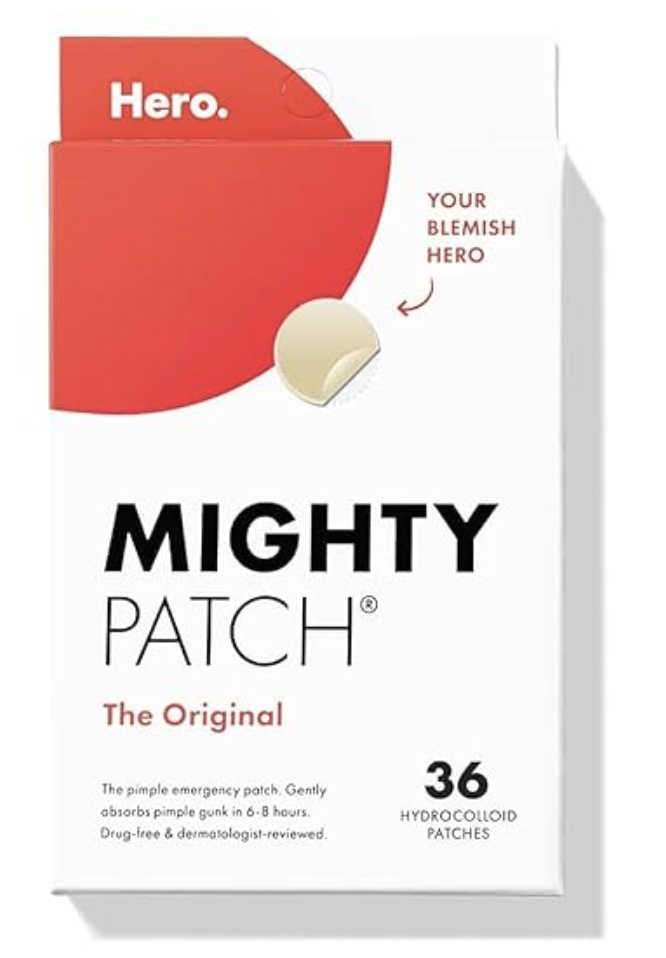
Mario Badescu Drying Lotion
- Key benefits: Dries pimples overnight.
- Active ingredient: Calamine, sulfur, zinc oxide.
- Best for: Those with small, inflamed pimples.
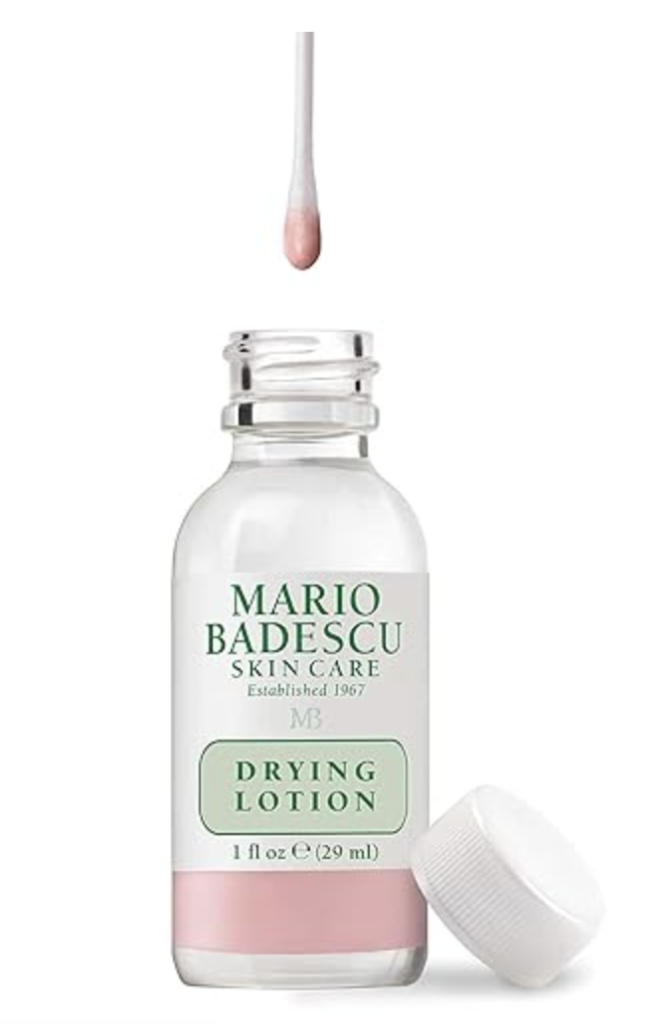
Murad Rapid Relief Acne Spot Treatment
- Key benefits: Fast-acting acne relief.
- Active ingredient: 2% salicylic acid.
- Best for: Those with moderate acne.
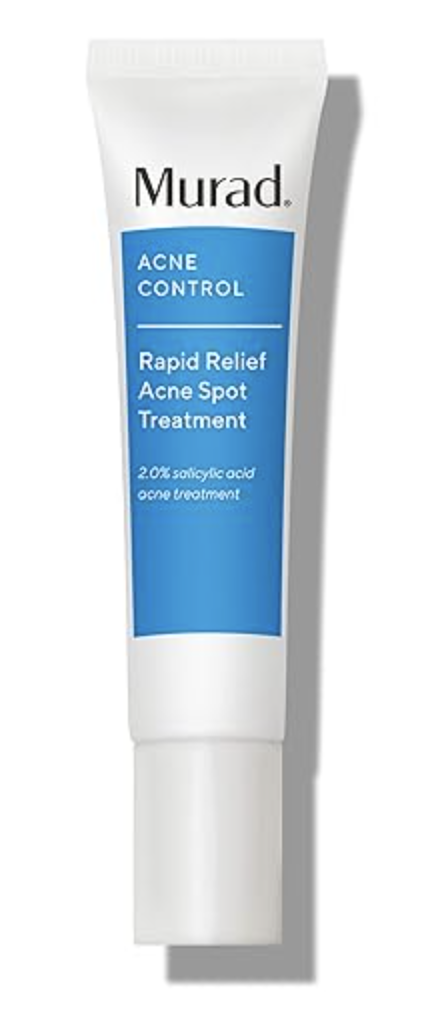
Neutrogena Rapid Clear Stubborn Acne Spot Treatment Gel
- Key benefits: Treats stubborn acne.
- Active ingredient: 10% benzoyl peroxide.
- Best for: Those with severe acne.
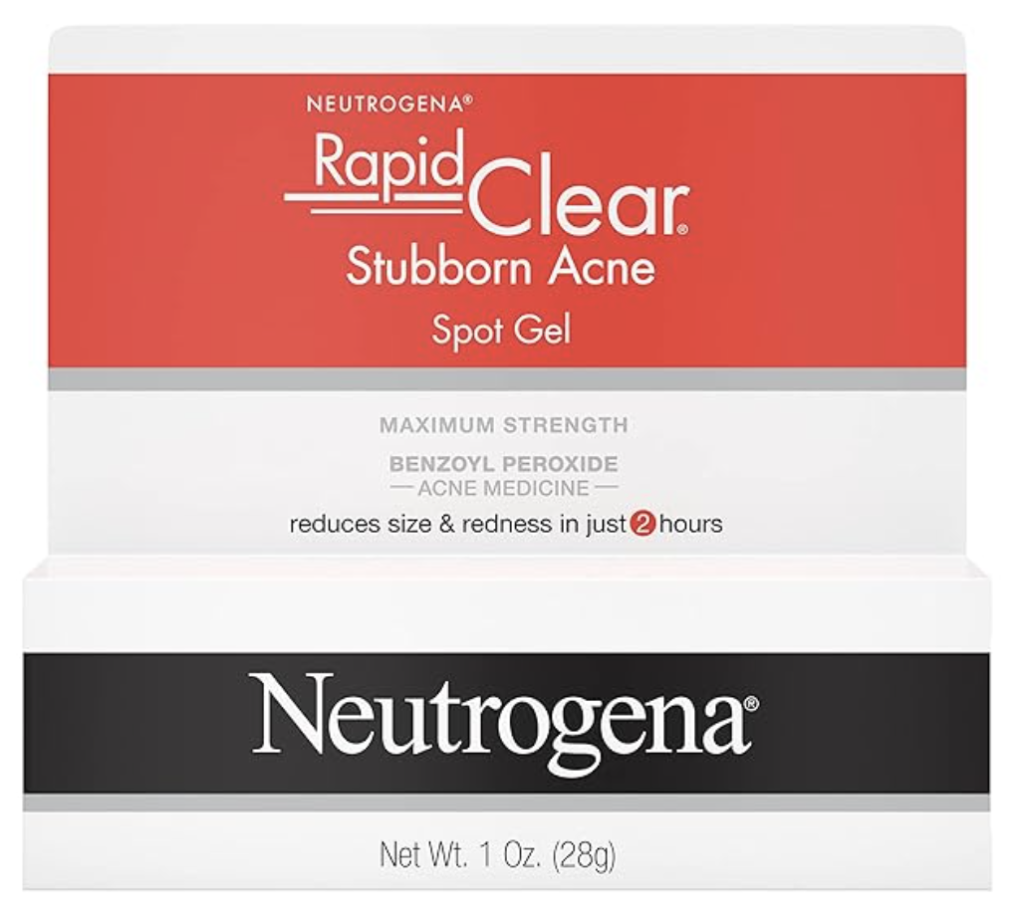
Differin Acne Treatment Gel
- Key benefits: Long-term acne treatment, improves skin texture.
- Active ingredient: 0.1% adapalene.
- Best for: Those with persistent acne or acne-prone skin.
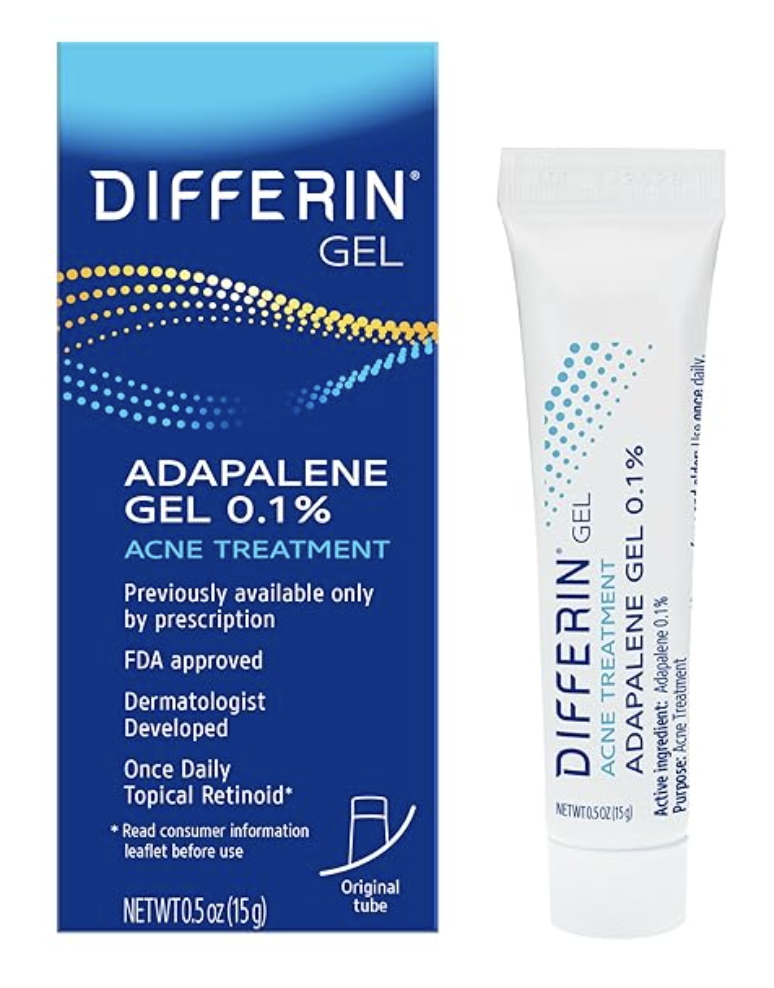
Pimple Popper Tool Kit
- Key benefits: Manual extraction of blackheads and pimples.
- Active ingredient: N/A.
- Best for: Those who prefer manual extraction and are skilled in using these tools.
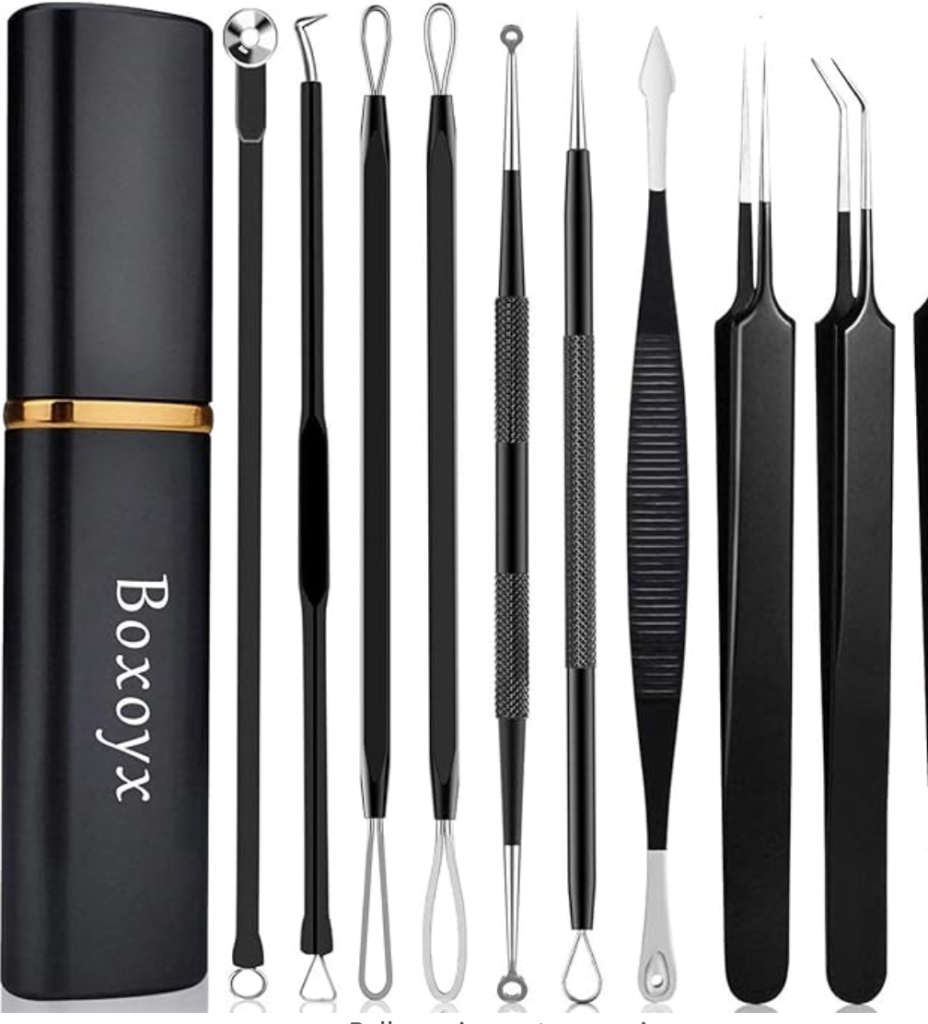
- For mild acne: Hero Cosmetics Mighty Patches or Mario Badescu Drying Lotion can be effective.
- For moderate acne: Murad Rapid Relief Acne Spot Treatment or Neutrogena Rapid Clear Stubborn Acne Spot Treatment Gel can be used.
- For severe acne or persistent acne: Differin Acne Treatment Gel is a prescription medication that can provide long-term benefits.
- For manual extraction: The Pimple Popper Tool Kit can be used, but it’s important to use them properly to avoid damaging your skin.
Choosing the right acne treatment depends on the severity of your acne, your skin type, and your preferences.
Sensitive Skin Considerations
Sensitive skin needs careful attention when it comes to anti-aging. You should avoid using products that have harsh chemicals, strong fragrances, or irritants. These can cause issues like redness, itching, or burning.
Choose products that have a short list of clean ingredients. Focus on gentle ingredients that work well. Look for items that are labeled hypoallergenic or made just for sensitive skin.
Testing new products on a small patch of skin is very important. This helps you see if the product is a good fit for your skin. Always try one new product at a time. This way, your skin can adjust before you try more. Start with a simple routine. Then, slowly add stronger ingredients like retinol to lower the chances of irritation.
When looking for skincare products specifically designed for sensitive skin, keep these factors in mind:
Ingredients to Avoid for Sensitive Skin:
- Fragrance: Often a common irritant. Look for fragrance-free products.
- Alcohol: Can be drying and irritating.
- Sulfates: Can strip the skin of natural oils.
- Dyes: Artificial dyes can cause allergic reactions.
- Retinoids (high concentrations): While effective for some, high concentrations can be irritating for sensitive skin.
Ingredients to Seek for Sensitive Skin:
- Hyaluronic acid: A humectant that helps retain moisture.
- Ceramides: Lipids that help strengthen the skin’s barrier.
- Niacinamide: Can help soothe and reduce redness.
- Chamomile: Has calming properties.
- Aloe vera: A natural moisturizer with anti-inflammatory properties.
Product Labels:
- Look for terms like: “hypoallergenic,” “non-comedogenic,” “gentle,” or “suitable for sensitive skin.”
- Check the ingredient list for any potential irritants.
Recommended Brands:
- CeraVe: Known for its gentle, hydrating products.
- La Roche-Posay: Offers a wide range of products for sensitive skin.
- Toleriane: A specialized line for sensitive skin.
- Aveeno: Known for its calming and soothing properties.
- Cetaphil: Offers gentle, hypoallergenic products.
Best Sensitive Skin Products
Toleriane Skincare Line : Toleriane is a well-regarded skincare line known for its gentle formulations suitable for sensitive skin.
Moisturizers
- Toleriane Rosaliac Anti-Redness Face Moisturizer: Specifically designed to reduce redness and soothe sensitive skin.
- Toleriane Dermallergo Soothing Repair Moisturizer: Provides deep hydration and repair for sensitive skin.
- Calm + Restore Age Renewal Eye Gel: Targets signs of aging around the delicate eye area.
Cleansers
- Toleriane Daily Facial Cleanser: A gentle, alcohol-free cleanser for sensitive skin.
- Le Cleanser Gel To Milk Fragrance-Free Daily Facial Cleanser: Another gentle cleanser that transforms from gel to milk.
Other Products
- No Rinse Hydrating Facial Toner: Provides hydration without the need to rinse.
- Dayglow Face Oil: A nourishing oil for sensitive skin.
- 10% Pure Vitamin C Anti-Aging Face Serum: An antioxidant serum to help brighten and firm the skin.
- Age Defying Rejuvenating Plant Based Retinol Alternative Serum: A plant-based alternative to retinol for anti-aging benefits.
Remember to patch test any new product on a small area of skin before applying it to your entire face.
Enhancing Your Routine with Anti-Aging Powerhouses
Once you have a steady routine with your main products, think about adding powerful ingredients that fight signs of aging. You can find these ingredients in serums or specific treatments, and they can really improve your results.
There are many options, like retinoids and peptides, that can help with different skin concerns. Make sure to add these ingredients slowly and watch how your skin reacts.
The Role of Retinoids
Retinoids come from vitamin A and are known as one of the best options for anti-aging skincare. They help the skin by increasing cell turnover, boosting collagen production, and reducing fine lines, wrinkles, and age spots.
Retinoids are available in different strengths. You can find them in stores as retinol or get stronger versions, like tretinoin, from a doctor. It is important to begin with a lower strength and increase it slowly based on how your skin responds.
Using retinoids can make your skin more sensitive to the sun. So, it’s best to apply them at night and use sunscreen during the day. Initially, you might experience some dryness or irritation, so start off slowly and increase how often you use them as your skin gets used to it.
Peptides and Growth Factors
Peptides and growth factors are becoming more popular in anti-aging skincare. They can help make the skin firmer, more elastic, and look younger.
Peptides are short chains of amino acids. They are important for creating proteins like collagen and elastin. Adding peptides to your skincare routine can help support the skin’s structure. This can help reduce fine lines and wrinkles.
Growth factors are proteins that appear in the skin naturally. They help with cell growth and repair. When you put them on your skin, they can boost collagen production, improve skin elasticity, and lessen the look of fine lines and wrinkles.
Hyaluronic Acid and Hydration Boosters
Hyaluronic acid is a great ingredient. It acts as a humectant, which means it pulls in and keeps moisture. This helps to hydrate the skin and make it look plumper.
Our skin naturally has hyaluronic acid, but as we age, we lose it. This loss can lead to dryness, fine lines, and less skin elasticity. To bring back some of that hydration, you can use products that are high in hyaluronic acid. This helps your skin look more youthful and plump.
Look for serums, moisturizers, or masks that have hyaluronic acid. It can really help improve hydration and skin elasticity. It can hold up to 1,000 times its weight in water. This makes it a good option for all skin types, even for those with oily or acne-prone skin.
Hyaluronic acid is a naturally occurring substance found in the skin that helps retain moisture. It can be a key ingredient in many skincare products designed to hydrate and plump the skin.
Here are some popular products that contain hyaluronic acid and other hydration boosters:
Serums:
- CeraVe Hyaluronic Acid Serum: A lightweight, fragrance-free serum that provides deep hydration.
- The Ordinary Hyaluronic Acid 2% + B5: A budget-friendly option that offers a high concentration of hyaluronic acid.
- Neutrogena Hydro Boost Hyaluronic Acid Serum: A hydrating serum suitable for dry skin.
Moisturizers:
- La Roche-Posay Toleriane Double Repair Moisturizer: A hydrating moisturizer that contains both hyaluronic acid and niacinamide.
- CeraVe Moisturizing Cream: A rich, creamy moisturizer that is formulated with hyaluronic acid and ceramides.
- Neutrogena Hydro Boost Water Gel: A lightweight, gel-based moisturizer that provides intense hydration.
Face Masks:
- Laneige Water Sleeping Mask: A popular overnight mask that is packed with hyaluronic acid and other hydrating ingredients.
- Origins Drink Up Intensive Overnight Mask: A hydrating mask that is formulated with avocado and honey.
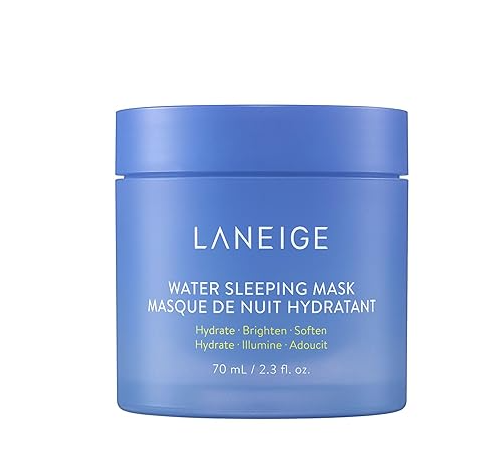
Other hydration boosters to look for:
- Glycerin: A humectant that draws moisture into the skin.
- Aloe vera: A natural moisturizer with soothing properties.
- Sodium PCA: A natural moisturizing factor found in the skin.
And finally, we must not forget our LIPS
Lips, often overlooked in our skincare routines, deserve just as much attention as our face. They’re exposed to the elements, drying out and chapping easily. Including lip care in your routine can help prevent dryness, flakiness, and even wrinkles. Let’s dive into the importance of lip care and discover the best products to keep your lips soft, supple, and kissable.
Lip Care Essentials
Here are some essential products to keep your lips hydrated and plump:
Lip Balms:
- Burt’s Bees Beeswax Lip Balm: A classic option with natural ingredients.
- Vaseline Lip Therapy: A simple, effective balm that locks in moisture.
- Aquaphor Healing Ointment: A versatile ointment suitable for lips and other dry areas.
Lip Scrubs:
- EOS Pomegranate Raspberry Sugar Lip Scrub: A gentle exfoliator to remove dead skin cells.
- Lush Mint Lip Scrub: A refreshing option with mint and sugar.
Lip Masks:
- Laneige Lip Sleeping Mask: A popular overnight mask for hydration and plumping.
- Fresh Sugar Lip Polish Exfoliating Balm: A lip scrub and mask in one.
Lip Plumpers:
- Lancôme Juicy Tubes Gloss: A plumping lip gloss with a glossy finish.
- Too Faced Lip Injection Gloss: A plumping gloss with a tingling sensation.
Tips for healthy lips:
- Stay hydrated: Drinking plenty of water helps keep your lips hydrated from the inside out.
- Avoid licking your lips: This can dry out your lips and lead to chapping.
- Protect your lips: Wear a lip balm with SPF to protect your lips from the sun.
- Exfoliate regularly: Gently exfoliate your lips to remove dead skin cells and promote hydration.
By incorporating these products and tips into your skincare routine, you can help keep your lips soft, hydrated, and plump.
Lifestyle Habits That Support Your Skincare Goals
Having a good skincare routine is important for healthy and youthful skin. However, adopting helpful lifestyle habits can boost your results even more. Taking care of your body from the inside works well with your skincare routine, making it more effective.
Making smart choices about what you eat, how much sleep you get, and managing stress can greatly affect your skin health and general well-being. Keep in mind that a complete approach to fighting aging involves taking care of both your body and mind, not just treating the outside signs of aging.
Diet and Nutrition for Healthy Skin
Our diet is very important for keeping our skin healthy and radiant. Eating a balanced diet with many fruits, vegetables, and healthy fats gives our bodies the nutrients they need to support skin health from the inside.
Antioxidants are found in colorful fruits and vegetables. They help protect our skin from damage caused by free radicals, which can speed up aging. Vitamin C is important for making collagen and is in citrus fruits, berries, and leafy greens. Vitamin E, which protects against sun damage, is found in nuts, seeds, and avocados.
Healthy fats, like omega-3 fatty acids in fatty fish such as salmon and in plants like flaxseed and chia seeds, help keep our skin’s natural barrier strong. This, in turn, keeps our skin hydrated and soft.
And don’t forget the importance of HYDRATION. Staying hydrated is essential for overall health, and it also plays a crucial role in maintaining healthy skin. When your body is well-hydrated, your skin can better retain moisture, leading to a plump, supple appearance. Dehydration, on the other hand, can cause dryness, flakiness, and even premature aging. So, make sure to drink plenty of water throughout the day to keep your skin looking its best. DRINK UP!
The Importance of Sleep and Stress Management on Skincare
Adequate sleep and good stress management are key to our health and affect our skin a lot. When we sleep, our body repairs itself and makes new cells, including skin cells.
Not getting enough sleep can interfere with this process. This can cause your skin to look dull, create dark circles under your eyes, and lead to more inflammation. Try to get seven to nine hours of good sleep each night. This will give your skin enough time to heal and feel fresh.
Stress is common in today’s world and can seriously harm our skin. When stress levels rise, our body releases cortisol. This hormone can increase oil production, cause breakouts, and make inflammation worse. To reduce stress and protect your skin, consider doing activities like exercise, meditation, or spending time outdoors in nature.
Troubleshooting Common Issues in Anti-Aging Skincare
Even with a good routine, you can still face some common skin problems. This often happens when you try a new product. Knowing what these issues are and how to fix them can help you avoid problems and keep your skincare on the right path.
You might deal with dryness, irritation, or surprising breakouts. Many things can cause these issues. By figuring out what is causing them and making a few easy changes, you can get past these bumps and keep your skin looking healthy and young.
Dealing with Irritation and Sensitivity
Irritation and sensitivity are common in anti-aging skincare. They can happen because of strong ingredients or existing skin conditions. If you see redness, itching, burning, or dryness, it’s important to change your routine. I’ve always had really strong reactions to shaving so adding an exfoliant and a good shaving cream and an aftershave Vitamin E Oil really help[ed with inflammation.
First, look for possible irritants. Common ones are fragrances, essential oils, alcohol, and some chemical exfoliants. Use gentle, fragrance-free products that are made for sensitive skin.
You should cut back on strong ingredients like retinoids or chemical exfoliants for a while. This lets your skin heal and rebuild its barrier. When you start using them again, do it slowly. Begin with using them once or twice a week and watch how your skin reacts.
When to See a Dermatologist
While many skin concerns can be managed with a good skincare routine, it’s very important to see a certified dermatologist for serious or getting worse skin problems. They know how to find and treat different skin conditions well.
Dermatologists can help you spot issues like eczema, rosacea, or acne. They can suggest the right treatments and the best skincare products for you. They can also check moles, odd spots, or anything that might relate to skin cancer.
Seeing a dermatologist regularly is key for catching problems early. This is especially true for those who have had skin cancer before or who get a lot of sun exposure. Remember, it is always better to prevent and catch skin cancer early than to wait for treatment later.
Conclusion
In conclusion, having a specific anti-aging skincare routine is important for keeping your skin looking youthful and healthy. First, know your skin type. Use essential products that suit you. Follow a routine made just for you to help fight signs of aging. Being consistent is very important. You should also have healthy habits. Always remember, it’s better to prevent issues than to fix them later. Start early and change your routine as your skin changes. Take time for self-care and buy good quality products meant for your needs. For skincare tips and updates, share this guide on social media to help others glow!
These are just a few of the many excellent products available for aging skin. I’ve included affiliate links to help you find them easily, but feel free to shop around and find the products that work best for you. Remember, the most important thing is to find a routine that you enjoy and that makes you feel confident in your skin.
Frequently Asked Questions
What is the Best Age to Start an Anti-Aging Skincare Routine?
The earlier, the better! Taking care of yourself before problems start is much better than trying to fix issues later. If you start in your 20s or 30s, when collagen production starts to drop, it can help you stay ahead. This way, you can keep your skin health at its best for many years.
Can I Reverse Signs of Aging with Skincare Alone?
Skincare can’t completely erase signs of aging, but it really can make a difference. It can improve the appearance of wrinkles, fine lines, and skin texture. Clinical trials have found that using products with retinoids, antioxidants, and peptides regularly can help with skin rejuvenation.
How Often Should I Update My Skincare Routine?
Your skincare routine should change as your skin changes. Things like getting older, hormone changes, the environment, and moving to a different place can require you to update your routine. Check your skin often for new age spots, dryness, or other problems. Change your routine when needed.
Are Expensive Skincare Products Always Better?
The success of skin care products relies on the active ingredients, not how much they cost. A review of research shows that many low-cost products have the same strong ingredients as pricey ones. It is important to find products with active ingredients that can help with your specific skin concerns.
How Do I Know if a Product is Working for Me?
Give a product about 4 to 6 weeks to show clear results. Watch your skin for signs of change. Look for smoother skin, more even skin tone, fewer breakouts, or better hydration. If you don’t notice any improvement after this time, you may want to try a new product.
Tips for Staying Consistent with Your Skincare Routine
The key to good skincare is sticking to it. Make sure to fit your morning and night routine into your daily plan. Keep your products in sight, set phone reminders, or team up with a friend to help you stay on track with your skin health.
Shop my favorite beauty finds on Amazon!
[These are just a few of the many excellent products available for aging skin. I’ve included affiliate links to help you find them easily, but feel free to shop around and find the products that work best for you. Remember, the most important thing is to find a routine that you enjoy and that makes you feel confident in your skin.]
